Are you sure your garage floor can withstand another winter? With melting snow, slush, and road salt constantly finding their way into our garages, many homeowners are unknowingly setting themselves up for cracking, staining, and costly repairs. If you’ve ever questioned whether your current approach is enough for protecting garage floors from slush, this guide offers proven steps that truly work—ensuring your space stays clean, safe, and damage-free all season long.
Are You Doing Enough for Protecting Garage Floors from Slush?
Each winter, our garage floors endure a harsh assault: melted snow drips from cars, slush is trampled inside, and road salt eats away at surfaces. But are your current efforts honestly enough to protect your garage floor from these hazards? Many homeowners simply sweep or mop and hope for the best, only realizing too late that these methods fail to address the underlying threats of moisture, salt, and constant temperature changes. Protecting your garage floor from winter slush requires a proactive combination of barrier methods and consistent upkeep.
The damage slush and salt can inflict is often gradual but devastating. Without elevated protection like quality floor coatings or a durable containment mat, wet debris and corrosive salts seep into the concrete, causing unsightly stains, cracks, and even hazardous slippery spots. To truly safeguard your space, you’ll want to use proven options—like epoxy coatings, containment mats, or advanced floor mats—that create impermeable barriers. Below, we’ve gathered a step-by-step approach and the most effective products for protecting your garage floor from slush, helping you transform your garage flooring into a fortress against winter’s worst.
What You'll Learn About Protecting Garage Floors from Slush
- The most effective strategies for protecting garage floors from slush
- How floor coatings, containment mats, and floor mats compare
- Best practices for maintaining garage floors during winter
- Answers to the most common questions about protecting your garage floor

Understanding Why Protecting Garage Floors from Slush Matters
To truly understand the importance of protecting garage floors from slush, let’s look at what winter really does to your garage floor. As cars bring in slush—often laced with corrosive road salt—from snowy streets, it melts and pools onto unprotected surfaces. Over time, salt and moisture can penetrate even tiny cracks, accelerating the breakdown of concrete, causing permanent stains, and creating safety hazards like slips and falls. If left unchecked, these issues can turn a well-maintained garage floor into a costly, crumbling mess in just a few winters.
Neglecting your garage flooring during the harsh months brings real consequences. Apart from unsightly cracks and stains, there’s a risk of further structural damage and even injury from slippery spots. Proper maintenance—such as applying a tough floor coating or using a containment mat—can prevent these headaches. By investing in the right products and making cleaning a routine, you’ll not only protect your garage floor but also add value and durability to your entire garage space. In the next sections, we’ll show you exactly how to outsmart winter’s attack.
- Impact of slush, snow, and salt on your garage floor
- Consequences of neglect: cracks, stains, and safety hazards
- Importance of choosing the right floor coatings and mats
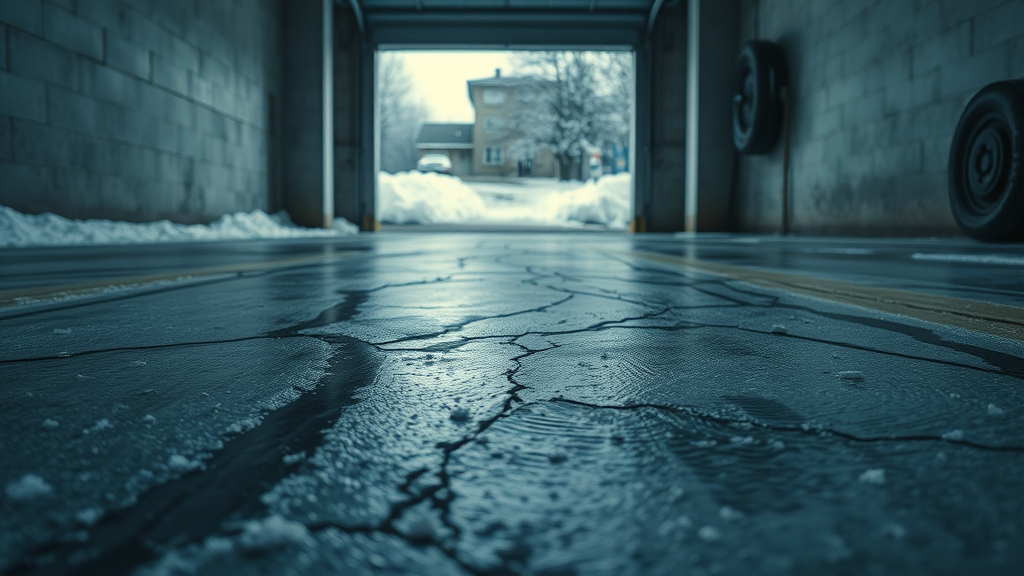
Best Materials for Protecting Garage Floors from Slush
Choosing the right materials is key to effective garage floor protection in the winter. The two most popular solutions for keeping slush and salt at bay are containment mats and floor coatings. Containment mats are engineered to collect gallons of water and melted snow before they touch your concrete, with raised edges that prevent spillover. Floor coatings—the industry favorite being epoxy resin—create a thick, hard-wearing layer that shields concrete from stains, salt, and moisture, making cleanup a breeze and keeping your surface in top condition year after year.
Between these two, you’ll find a variety of approaches that cater to different needs and budgets. For high-traffic garages, a tandem of a high-grade epoxy coat and a reliable containment mat offers unmatched durability and double the protection. For those seeking easier installation, robust floor mats provide an affordable buffer against melted snow and grime. Whether you pick mats, coatings, or a combination, prioritizing professional-grade materials ensures your garage flooring survives even the harshest winters.
Containment Mats vs. Floor Mats: Which Is Better for Your Garage Floor?
When deciding between a containment mat and a traditional floor mat, it helps to consider your primary concerns—do you want easy installation, or do you need maximum liquid containment? Standard floor mats will capture dirt, debris, and a modest amount of wet slush, but they often lack the perimeter lips needed to contain gallons of water from large snow melts or major storms.
By contrast, high-quality containment mats act like a barrier, surrounding the area beneath your vehicle with raised edges capable of capturing water, melted snow, and even oil spills. This stops messes from spreading and keeps your garage floor clean, dry, and stain-free. Selecting between these two will ultimately depend on how much slush and water you regularly deal with and how much work you’re willing to put into garage maintenance.
| Material | Durability | Cost | Installation | Maintenance |
|---|---|---|---|---|
| Containment Mat | High (captures large amounts of liquid, resists abrasion) | Medium ($100–$250+) | Easy (roll out, no adhesives) | Low (remove, shake, and rinse) |
| Standard Floor Mat | Medium (traps debris, limited water protection) | Low–Medium ($50–$150) | Easy (place on floor) | Medium (requires regular cleaning, may not contain large spills) |
| Epoxy Floor Coating | Very High (resists stains, abrasion, chemicals) | High ($500+ for professional installation) | Professional Recommended | Very Low (simple sweeping, occasional mopping) |
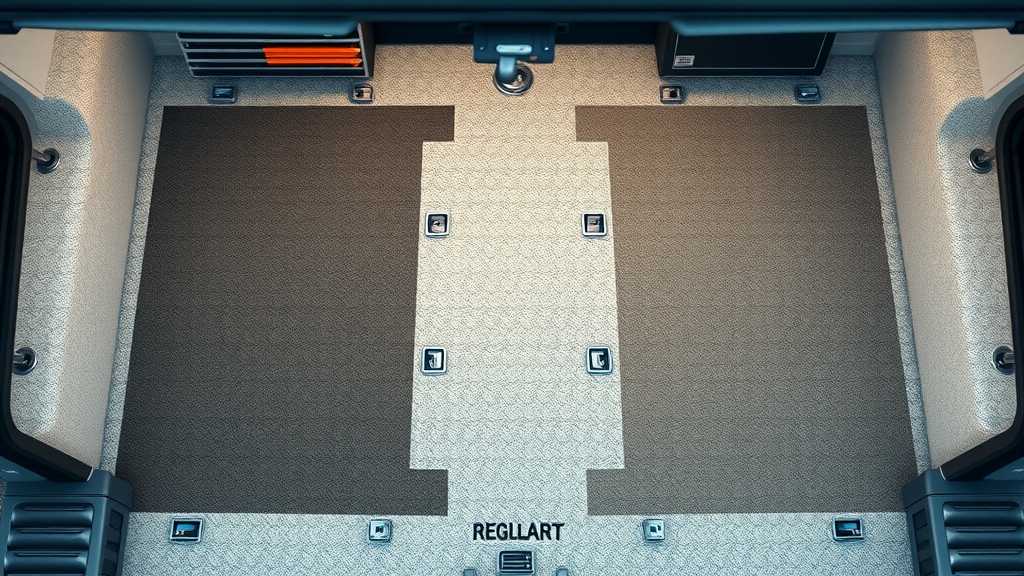
Choosing the Right Floor Coating for Slush Protection
Epoxy resin stands out as one of the best options for protecting garage floors from slush. This hard-setting, chemical-resistant coating forms a nearly impenetrable shield over your concrete, safeguarding it from melted snow, road salt, and even oil spills. Epoxy coats hold up against harsh traffic, resist staining, and make cleaning a simple task—just a quick sweep or mop and your garage floor looks brand new. Alternatives to epoxy include polyurethane and polyaspartic coatings, which also provide high durability with faster drying times and added UV resistance.
However, not all floor coatings are created equal. For slush-prone garages, seek coatings formulated for high moisture resistance and slip reduction. Professional application tends to offer the most even, long-lasting coverage without bubbles or thin spots. If you live in an area with heavy winter precipitation, combining an epoxy floor coating with a containment mat beneath your vehicles delivers the strongest defense against seasonal damage. Investing in the right garage flooring solution means you’ll enjoy cleaner, safer, and longer-lasting floors—no matter how much winter throws your way.
- Epoxy resin and epoxy coat advantages
- Other garage floor coatings and how they prevent slush damage
“Proper floor coatings and containment mats are critical for maintaining a clean and damage-free garage in the winter months.”
Step-by-Step Guide: How to Protect Your Garage Floor from Winter Slush
- Sweep and clean your garage floor thoroughly: Remove all dirt, debris, and existing stains so your chosen protection works properly.
- Apply or maintain your chosen floor coating (epoxy resin or similar): Professional-grade coatings create a lasting shield.
- Install containment mats or floor mats in high-traffic areas: Position mats to capture slush under vehicles and entryways.
- Regularly remove accumulated slush and check for oil spill or salt deposits: Use a squeegee to push pooled water off mats and immediately address any oil spills for optimal cleanliness.
- Keep your garage floor clean to reduce moisture and staining: Frequent cleaning extends protection and prevents long-term damage to your garage flooring.

Routine Maintenance Tips for Protecting Your Garage Floors from Slush
Regular maintenance is the secret to keeping your garage floor clean and safe year-round. Begin by establishing a weekly cleaning routine during the winter months. Remove standing water and melted snow with a shop vacuum or mop, and use a squeegee to push excess liquid from mats or directly off your garage floor. For coated floors, avoid harsh chemicals; opt for mild soap—and never let grime or road salt accumulate. If you spot an oil spill, act fast: absorb with kitty litter, then wipe, rinse, and dry thoroughly to avoid permanent stains or surface etching.
If you’ve invested in floor coatings or mats, keeping them in top shape will ensure maximum winter protection. Clean mats regularly by taking them outside, hosing them down, and allowing them to dry before placement. Inspect floor coatings for chips or worn spots every season, touching up or reapplying as needed. By protecting your garage floor through consistent maintenance, you eliminate winter’s main hazards—slips, cracking, staining—and enjoy a cleaner, safer, and more attractive garage all year long.
- How to keep your garage floor clean and safe year-round
- Best cleaning practices for floor coatings and mats
- Dealing with oil spills and preventing long-term damage
Essential Garage Floor Accessories: Enhancing Protection from Slush
Accessorizing your garage doesn’t just mean adding storage racks or cabinets—it can also involve investing in protective gear like floor tile or specialized weather barriers. Interlocking floor tiles add another layer of defense, preventing water and salt from pooling on bare concrete. Flexible and impact-resistant, high-quality tiles can be installed over your existing floor, combining attractive finishes with practical winter performance. They’re easy to remove for periodic deep-cleaning and can even be replaced in individual sections if a tile is damaged or stained.
Other essential accessories for winter protection include edge seals for garage doors and anti-slip mats designed to minimize risk in icy or wet conditions. Consider adding absorbent runners at entrances and a wall hook for easily accessible squeegee storage. These simple additions work together to form a defensive system, ensuring your garage flooring stands up to even the toughest winter slush, melted snow, and salt.
- Benefits of floor tile for extra protection
- Accessories that help protect your garage floor from winter and water
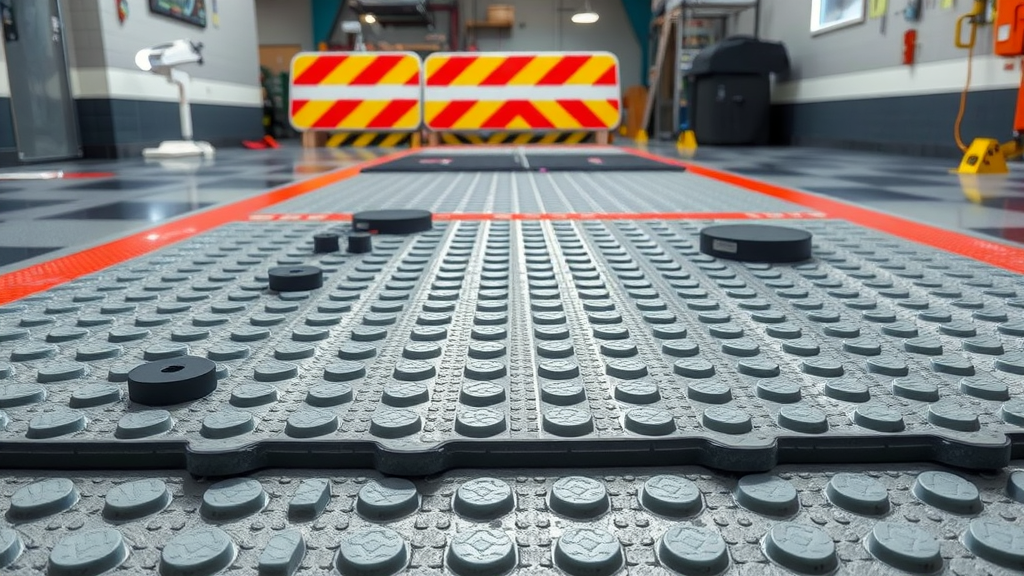
People Also Ask: How to keep garage floor from being slippery?
Effective Solutions for Preventing a Slippery Garage Floor
Slippery garage floors are a major safety concern, especially with the extra moisture and slush tracked in during winter. Start by ensuring you have a high-quality textured surface—whether from epoxy floor coatings with anti-slip additives or durable, ribbed floor mats. These options offer superior traction compared to bare concrete and reduce the risk of falls. For those with containment mats, look for versions with a grippy or raised tread pattern, offering a non-slip profile even as gallons of water pool on top.
Routine upkeep is vital for keeping floors non-slippery. Always dry up standing water as quickly as possible, using a mop, towels, or a garage squeegee to push moisture toward drains or outside. If your floor remains slick despite precautions, consider adding anti-slip tape or runner mats to high-traffic zones. By actively addressing potential slip hazards, you’ll protect your garage flooring and keep everyone—from kids to pets—safe all winter long.
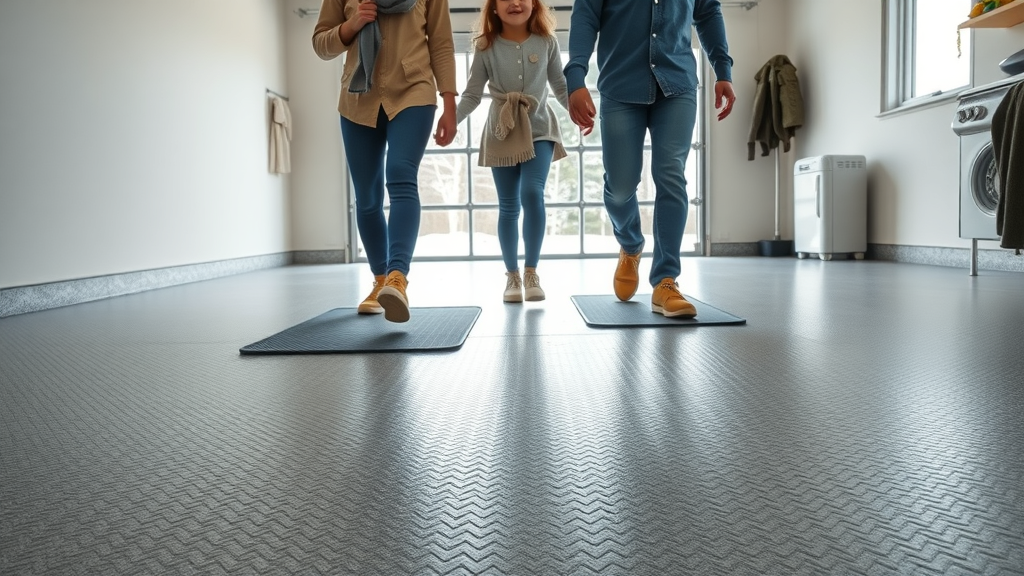
People Also Ask: What can I do to stop my garage floor from sweating?
Managing Moisture: Preventing Garage Floor Sweating
Garage floor “sweating” is a nuisance that occurs when warm, humid air condenses on cold concrete—often made worse by the residual effects of winter slush. To prevent this, focus on improving your garage’s ventilation and air circulation. Using box fans or a dehumidifier keeps excess moisture at bay. A vapor barrier beneath your garage floor can be effective for new builds or major renovations, though a high-quality epoxy coat or sealer will also reduce sweating in existing structures by blocking water absorption.
Another practical step is to keep the garage floor clean at all times. Removing residual snow, salt, or oil spills makes it easier to spot and clean up moisture. For persistent condensation, place moisture-absorbing mats or trays under vehicles, or opt for interlocking floor tiles with built-in drainage channels. These simple habits work together to minimize “sweating” and protect your garage floor from winter weather all year long.
People Also Ask: How to protect garage floor from water?
Waterproofing Methods for Protecting Garage Floors from Slush and Water
Waterproofing your garage floor is crucial for defending against melted snow, slush, and everyday spills. The most reliable method is applying a quality epoxy floor coating that seals pores and stops moisture from entering concrete. Look for products rated for freeze-thaw resistance, especially if your region experiences frequent cycles of melting and refreezing. Supplement this barrier with a containment mat—its raised edges catch water before it can spread, while its textured bottom keeps it firmly in place during use.
For garages prone to flooding or heavy water ingress, consider installing additional floor drains or sloped floor tiles that direct runoff outside. Remember that keeping your garage floor clean by swiftly mopping up water and maintaining a tight weather strip on your garage door further prevents moisture from compromising concrete. Combining professional coatings, mats, and routine cleaning equips your garage flooring for even the wettest winter months.
People Also Ask: How do I protect my garage floor from salt?
Preventing Salt Damage When Protecting Garage Floors from Slush
Road salt is notorious for wreaking havoc on garage floors each winter. When snow and ice from your car melt, salt-infused water can seep into tiny surface cracks, causing expansion and long-term deterioration. To protect against this, start by investing in a high-quality floor coating—preferably epoxy resin or polyurethane—that forms a seamless barrier, making it nearly impossible for salt to penetrate. Pair this with a containment mat directly under your car to catch salty runoff right at the source.
Regular washing (especially after major snowstorms) is key to removing lingering road salt. Use warm water and a mild detergent, and always mop dry to prevent reabsorption. Be proactive: treat new cracks or chips immediately by spot-repairing with matching floor coating paste. With these simple steps, you’ll protect your garage floor from salt and the costly damage it brings.
Key Takeaways: Protecting Garage Floors from Slush
- Consistent maintenance and cleaning are vital
- Use professional-grade floor coatings for best results
- Containment mats offer excellent protection from slush and salt
- Choosing the right materials extends the life of your garage floor
Frequently Asked Questions About Protecting Garage Floors from Slush
-
What are the best floor coatings for garages in winter?
Epoxy resin and polyaspartic coatings are the top choices. They offer superior moisture and salt resistance, prevent stains, and make cleaning a breeze—crucial for protecting your garage floor from winter slush. -
How often should I clean my garage floor in snowy climates?
During winter, aim for weekly cleanings, or more often if heavy slush or salt accumulates. This keeps surfaces safe, removes damaging debris, and helps your floor protection last. -
Are containment mats easy to install?
Yes. Most containment mats simply unroll or unfold onto your garage floor—no adhesive or tools needed. Just position under vehicles and you’re set for immediate slush protection. -
Can I protect my garage floor without major renovations?
Absolutely! Using containment mats, high-quality floor mats, sealers, and regular maintenance offers strong winter protection—even if you’re not ready for full resurfacing.
Conclusion: Protect Your Garage Floor from Winter Slush Damage
Take Action Now: Secure the Longevity of Your Garage Floor
“Preventative steps today can save thousands in garage floor repairs tomorrow.”
Call to Action: Call Us now to get your FREE Quote! 800-280-9210
Instructional walkthrough demonstrating step-by-step slush protection for garage floors, including epoxy coating application, mat installation, and winter cleaning tips.
To enhance your understanding of protecting garage floors from slush, consider exploring the following resources:
- “How to Prep Your Garage Floor for Winter” (taggconcretecoatings.com)
This article provides six practical tips, including repairing cracks, applying garage coatings, and using containment mats, to prepare your garage floor for winter conditions.
- “How to Maintain Garage Concrete During Winter” (richfieldblacktop.com)
This resource offers strategies such as reducing humidity, sealing your garage floor, and improving insulation to maintain your garage concrete during winter.
By consulting these resources, you’ll gain comprehensive insights into effective methods for protecting your garage floor from slush and winter damage.
 Add Row
Add Row  Add
Add 

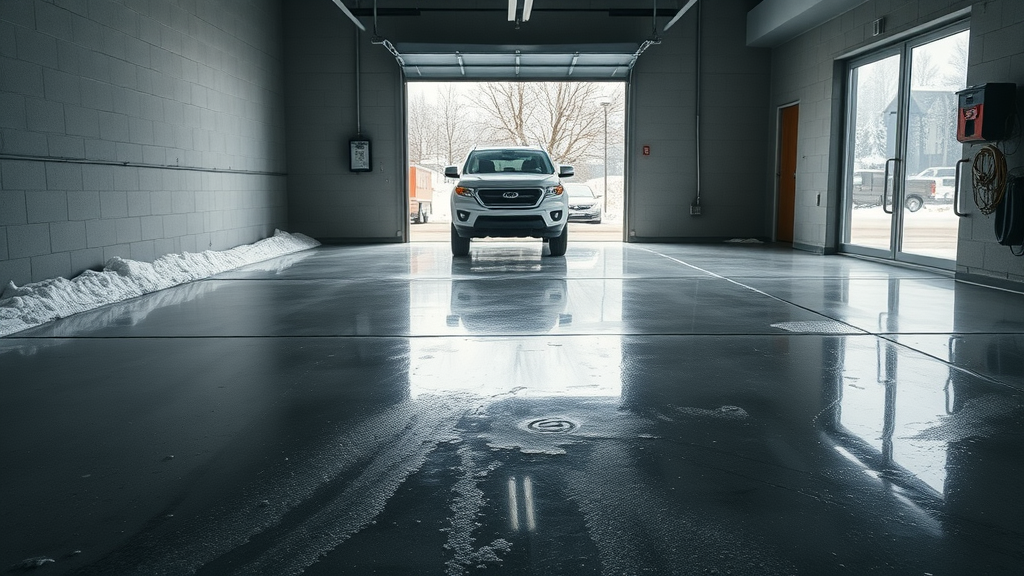
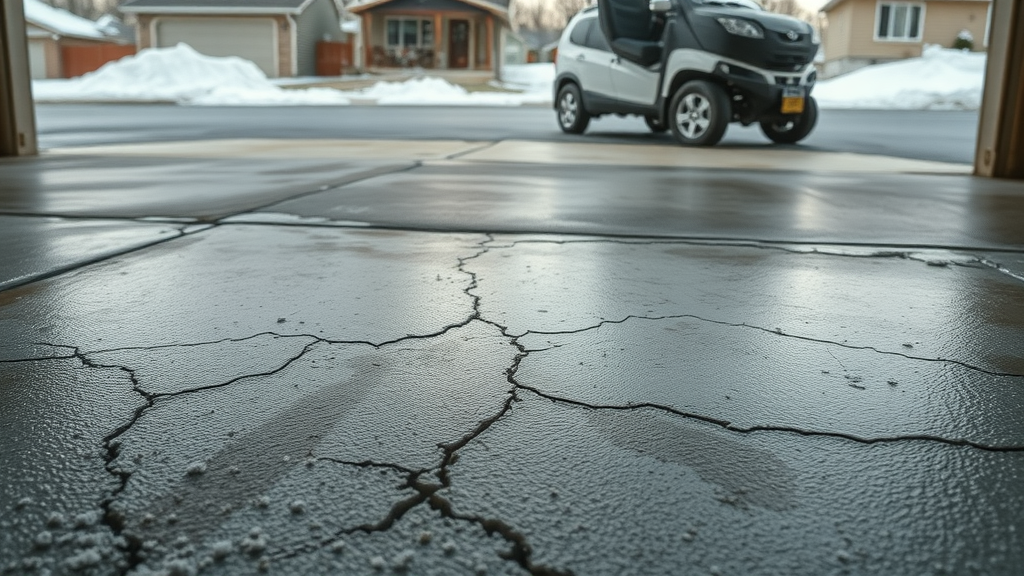

Write A Comment